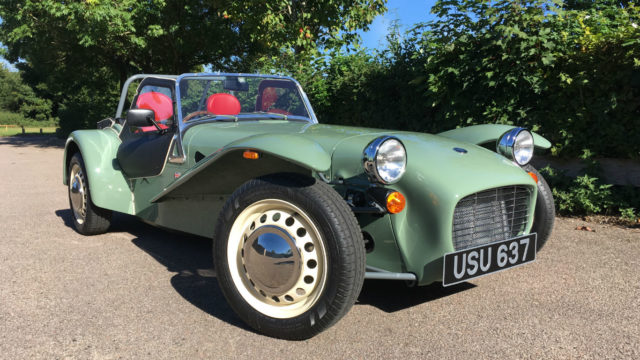 From the Fiat 500 to the Ford Mustang, retro-look cars are more than a passing fad. Now it’s the turn of the venerable Caterham Seven for a dose of classic cool: meet the limited-edition Seven Sprint.
From the Fiat 500 to the Ford Mustang, retro-look cars are more than a passing fad. Now it’s the turn of the venerable Caterham Seven for a dose of classic cool: meet the limited-edition Seven Sprint.
- Caterham reveals retro Seven Sprint ahead of Goodwood Revival debut
- The retro Caterham Seven Sprint has sold out within a week
- Read another car review on Motoring Research
Of course, the Seven was pretty ‘retro’ to start with. It’s a direct descendent of the 1957 Lotus Seven, assembled by Caterham since 1974. The Seven has constantly evolved, becoming ever-faster and more focused, but the Sprint is an affectionate nod to the past. Powered by an 80hp Suzuki engine, it has flared front wings, cream-painted steel wheels, a polished exhaust silencer and a wood-rimmed steering wheel.
Time to don our rose-tinted driving goggles and hit the road…
Prices and deals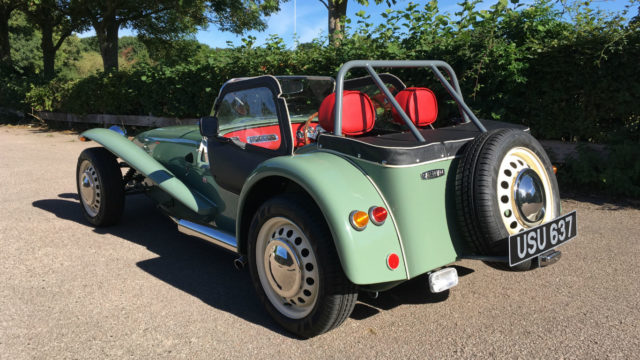
Caterham is only building 60 Sprints – to mark 60 years of the Seven – and they all sold out within a week of the car’s launch at Goodwood Revival. If you’ve got one, keep hold of it: the Sprint is a dead-cert future classic.
Prices start at £27,995 – a hefty £9,000 more than a basic Seven 160 with the same engine. Unlike other Sevens, you can’t save money by building it yourself either; the Sprint only comes in fully-assembled form.
What are its rivals?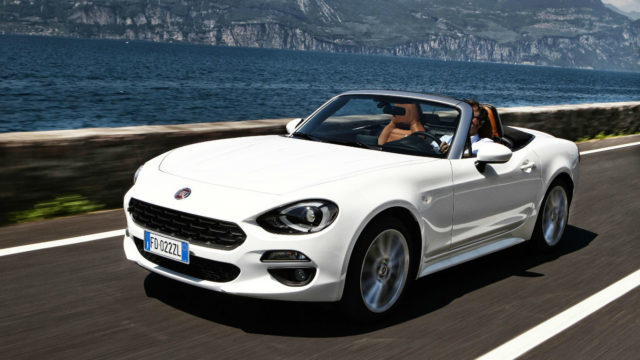
A niche car like the Seven Sprint exists in a parallel universe of its own. Many who buy one will be collectors or existing Caterham owners – perhaps both.
If we’re obliged to pick rivals, the new, retro-flavoured Fiat 124 Spider seems an obvious place to start. The Mazda MX-5 and Toyota GT86 are worth considering, too.
Prefer to buy used? The Lotus Elise is another iconic British sports car that only gets better with age. Or you could go for the sensible (if somewhat predictable) option and get a Porsche Boxster. It’s less characterful than a Caterham, but much easier to live with.
What engine does it use?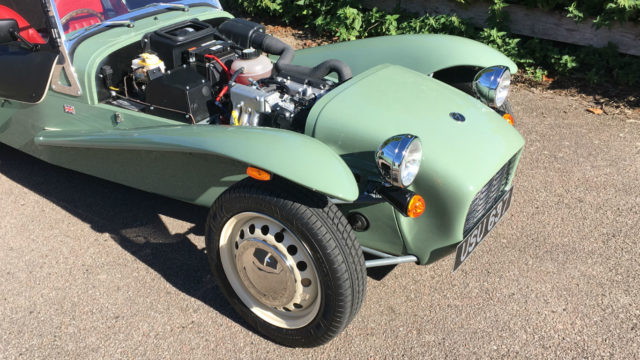
It looks like it’s driven straight out of a John Major anecdote about cricket grounds and warm beer, but the Seven Sprint is surprisingly modern under the skin.
It uses the same three-cylinder Suzuki engine as the Seven 160 – designed to meet Japanese ‘Kei car’ regulations that stipulate a maximum capacity of 660cc. Driving skinny 155-section rear tyres through a five-speed manual gearbox, it throbs at low revs, then buzzes and coughs. Half-motorbike, half-cantankerous wasp, its soundtrack is unlike any other car we can think of.
How fast?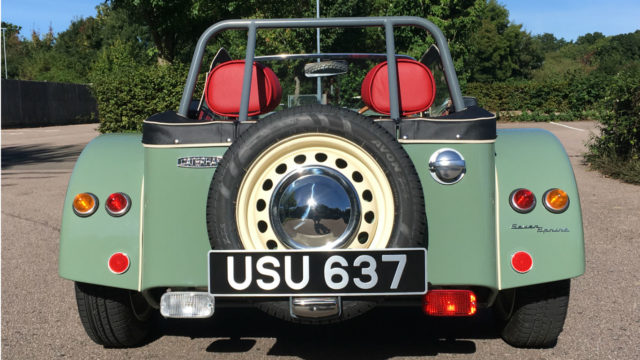
A power output of 80hp puts the Caterham on par with city cars such as the Fiat 500. Fortunately, it weighs just 490kg, versus 865kg for the Fiat. “Simplify, then add lightness”, as Lotus founder Colin Chapman used to say.
The Sprint, er, sprints to 60mph in 6.9 seconds, topping out at 100mph. That makes it the joint-slowest Seven (fastest is the 620R, at 2.8 seconds and 155mph respectively) – but frankly it feels quick enough when your elbow is almost grazing the kerb. And on that note…
Is it comfortable?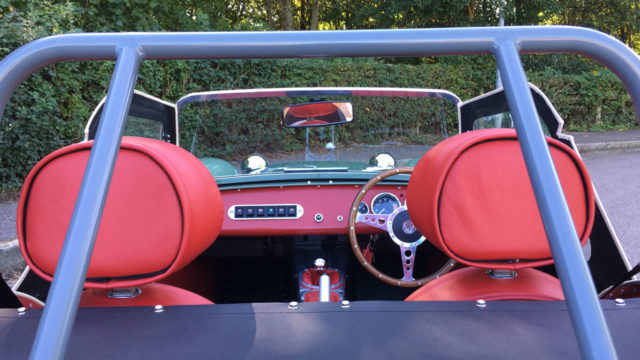
If your feet are bigger than a size-nine, you may need to remove your shoes to drive a Seven. And if you have a ‘fuller figure’, you may struggle to fit in at all. The cabin is ‘snug’ if we’re being polite, ‘cramped’ if we’re not. Caterham offers its wider, SV chassis as an option on most Sevens, but not the Sprint – or indeed the regular 160.
We can’t fault the well-padded seats, though. Upholstered in hand-stitched Scottish leather and embossed with the Caterham logo, they’re a welcome contrast to the rigid buckets found in hardcore Sevens.
Will I enjoy driving it?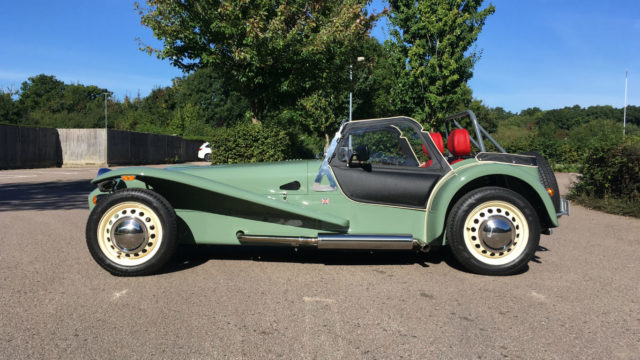
We sampled the Sprint on a crisp, cloudless September morning and it felt nigh-on perfect. On a wet January evening things could be rather different, but let’s not dwell on that…
The Sprint is easier to drive than other Sevens, with a light clutch and a torquey engine that pulls strongly from 2,000rpm. A larger steering wheel makes it less darty than a standard 160, too. Only the stubby, chrome-topped gearlever requires a firm shove, although we suspect this would loosen-up over time. Our test car (number one of 60) had covered less than 600 miles.
With a live axle and Panhard rods at the back, the Sprint’s chassis is as old-school as its styling. The result is a car that’s more supple and forgiving than you might expect. Where faster, track-focused Sevens feel tied-down, the Sprint squirms, shimmies and – if you provoke it – slides.
But this isn’t power-oversteering GT86-wannabe. Nor is it a masterclass in driving dynamics. Contrary to its name, the Sprint is best enjoyed at eight-tenths. Savour the rasp of the engine, the smell of hot exhaust, the sight of those cycle wings bobbing up and down: it’s the British sports car dream.
Fuel economy and running costs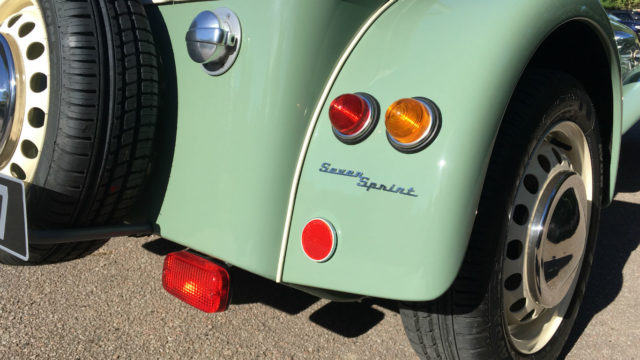
We can’t imagine many Seven owners clocking up lots of motorway miles. This is very much a weekend car, making fuel economy a relatively minor concern.
Even so, the Sprint’s small engine and light weight mean it’s actually very efficient. Drive sensibly (easier said than done) and you may see close to the claimed 57.6mpg. CO2 emissions of 114g/km mean free car tax (VED) in the first year and £30 a year thereafter.
What’s the interior like?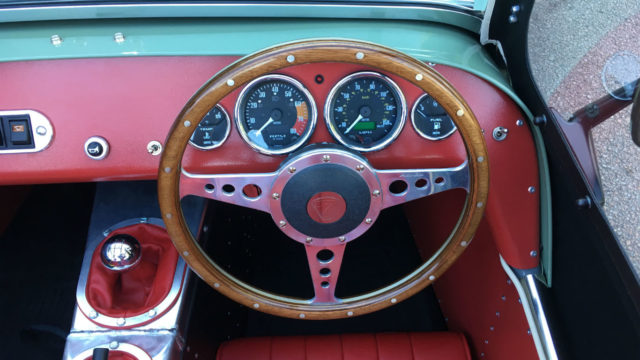
Cast-aside your preconceptions about low-volume British sports cars: the quality of the Caterham’s cabin is very good. Apart from being, well, snug, it’s an agreeable place to be.
Retro details help set the Sprint apart from a plain-Jane 160. Spot the toggle switches, exposed rivets, Smiths gauges and, of course, that lovely Moto-Lita wheel, which looks like it came straight off a Jaguar E-Type. There’s also a numbered plaque in front of the passenger, showing which of the 60 cars is yours.
Is it practical?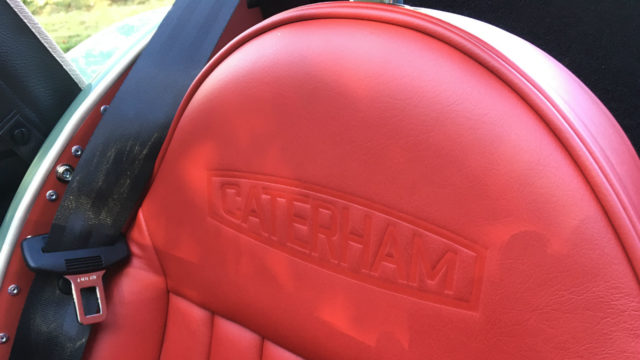
Ummm… no. There’s no boot and no stowage space to speak of. You don’t even get a glovebox.
If you do stash a bag in the passenger footwell, we’d advise you to remove it when parked. The Caterham’s fiddly hood and side screens are attached using poppers – hardly a failsafe security solution.
Tell me about the tech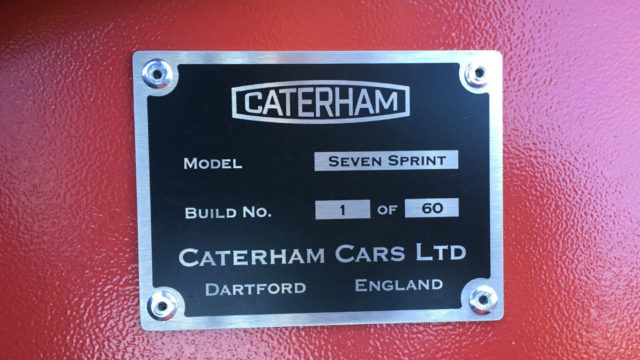
OK, we’re struggling here. If you want sat nav, in-car wi-fi, Bluetooth phone connectivity – or even just a radio, you’ll be disappointed. Caterham doesn’t do ‘infotainment’.
Still, the Sprint is the sort of car you’ll enjoy getting lost in. And you wouldn’t be able to hear Radio 4 over the incessant thrum of the engine anyway.
What about safety?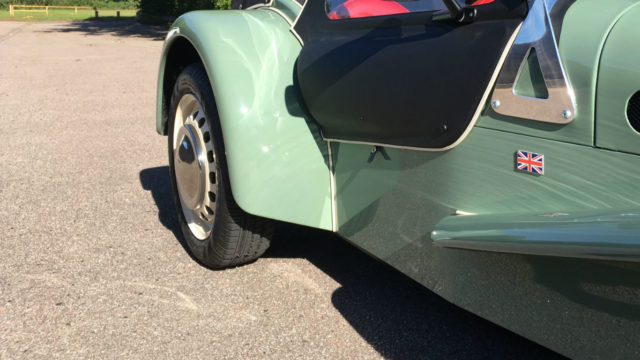
The Sprint’s powder-coated grey chassis is a homage to the Series 2 Lotus 7, while its full-width rollover bar also replicates the Hethel original.
Sevens have a fundamentally strong passenger cell – a fact proved time and again in the various Caterham racing series. Nonetheless, the complete lack of any electronic safety aids is a culture-shock if you’re used to ‘conventional’ modern cars. At least there’s no need to go fast to have fun…
Which version should I go for?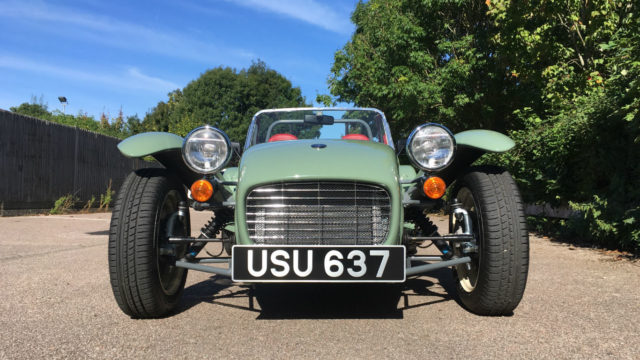
This question is slightly redundant given that all 60 Sprints are now sold. Assuming you can persuade (bribe?) a prospective owner to give up their place in the build-queue, you have a few choices to make.
First, you’ll need to pick one of the oh-so-retro paint colours. The car in our photos is Camberwick Green, but you can also have Mellow Yellow, Regency Red, British Racing Green, Misty Blue or Cream.
Beyond that, there is less scope for personalisation than a typical Caterham Seven. The only options are side-screen armrests (£95), a vinyl tonneau cover (£170), stainless steel rear wing guards (£40) and a two-inch-lower floor for extra cabin space (£395).
What’s the used alternative?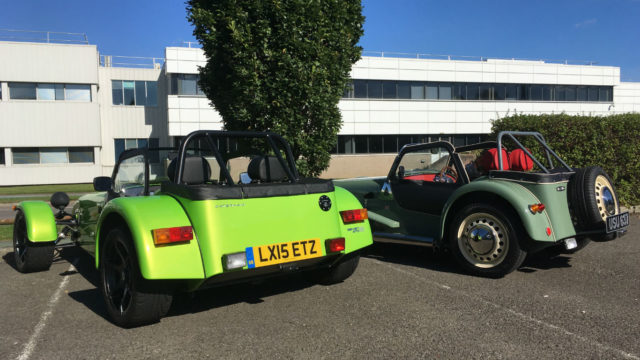
Why, a used Seven of course. When a car has been production for nigh-on 60 years, there are plenty of examples to choose from.
If you want an actual, pre-1974 Lotus Seven, prices range from around £15,000 to £35,000. Caterhams are better value, but we still only found a handful for less than £15,000. These cars don’t know the meaning of depreciation.
Should I buy one?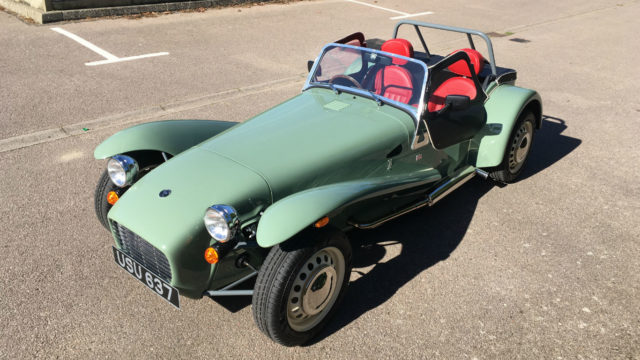
The Seven Sprint isn’t for everyone. If you value refinement, long-distance comfort and the ability to carry more than just a toothbrush, you should probably look elsewhere.
Still, there’s nothing quite like a Seven. These quirky little roadsters get under your skin and hard-wire themselves into your soul. Forget over-sized and over-complicated supercars: this is driving in its purest form.
That said, you’ll have just a much fun in a basic Seven 160 as the ritzier Sprint – and save £9,000 into the bargain. Build your 160 yourself and, at the cost of a few late nights and grazed knuckles, you could save a whopping £12,000.
Faced with figures like that, it’s hard to recommend the Seven Sprint. But if you’re one of those lucky 60 owners, that doesn’t mean we won’t be Camberwick Green with envy.
Pub fact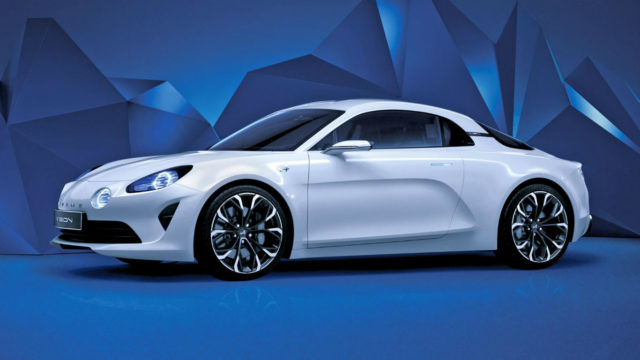
The forthcoming Alpine sports car started life as a joint-venture between Renault (which owns the Alpine brand) and Caterham. The companies worked together for 19 months before Caterham left the project.
The car seen here is the Alpine Vision concept. A production version is due in summer 2017, powered by a 1.8-litre, four-cylinder turbo engine and expected to cost around £50,000.